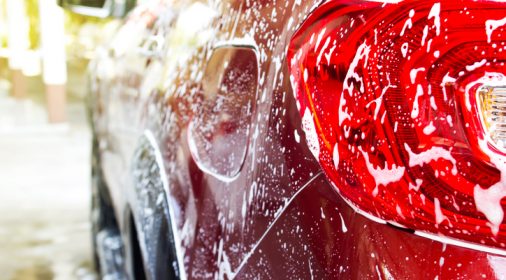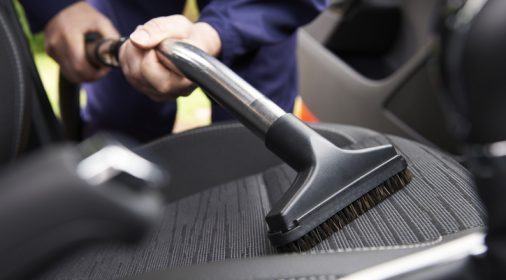The Beginner’s Guide: How to Polish a Car
Polishing your car is one of the best ways to restore its shine, protect its paintwork, and keep it looking showroom-ready. Whether you’re tackling it by hand or using a polishing machine, this guide will walk you through everything you need to know.
What is Car Polishing?
Car polishing is the process of using a mildly abrasive product to remove a thin layer of the vehicle’s clear coat. This helps smooth out minor imperfections, oxidation, and fine scratches, revealing a glossy, even finish. It’s different from waxing, which adds a protective layer but doesn’t correct the paintwork.
The Benefits of Polishing Your Car
Regularly polishing your car offers a range of benefits:
- Restores Shine: Brings back the original gloss and colour depth of your car paintwork.
- Removes Minor Imperfections: Tackles light scratches, swirl marks and oxidation.
- Prolongs Paint Life: By removing contaminants and keeping the surface smooth, polishing helps preserve the car’s paintwork.
- Improves Resale Value: A well-maintained finish gives a better impression to potential buyers.
How to Polish a Car: Step-by-Step
There are two main methods: polishing a car by hand and polishing a car with a mach
ine (such as an orbital polisher). Here’s how to do both safely.
Step 1: Wash Your Car Thoroughly
- Rinse your car with a hose to remove loose dirt and debris.
- Apply a quality car shampoo to a sponge or wash mitt and work over the bodywork, removing dirt and grime.
- Rinse off all soap and dry with a clean microfiber cloth to prevent water spots.
Step 2: Polishing a Car by Hand
- Choose a light abrasive polish suitable for your car’s paint type.
- Apply the polish to a clean sponge or applicator pad.
- Work in small sections using a gentle circular motion.
- Once a section is covered, use a separate clean pad or microfiber cloth to buff off the residue.
- Repeat for the entire car. This method takes more time but allows you to reach intricate areas a machine can’t access.
Step 3: Polishing a Car with a Machine
(e.g., using an orbital polisher)
Note: Machine polishing is faster but requires care. Using too high a speed can damage paint.
- Read your polisher’s instructions carefully before starting.
- Apply polish to the pad and spread it evenly over the section before switching on the machine.
- Keep the pad level and apply even pressure.
- Work in small areas at a time, moving slowly to ensure even polishing.
- Wipe away residue with a microfiber cloth.
Important: Never let the pad touch the ground as dirt particles can cause scratches.
Step 4: Polishing Your Car Windscreen
- Wash the windscreen to remove dirt.
- Use a windscreen polishing kit to remove fine scratches, following the manufacturer’s instructions.
- Buff to a clear finish for improved visibility.
Top Tips for a Successful Car Polish
- Work in a shaded area to avoid polish drying too quickly.
- Use clean, high-quality microfiber cloths and applicator pads.
- Replace pads if they become contaminated.
- Always test polish on a small area first.
- Slow, even motions deliver the best results.
When to Call the Professionals
Polishing can correct light scratches, but deeper marks or scuffs require professional attention. At ChipsAway, we specialise in polishing car paintwork and repairing minor damage with expert precision.
If you’re unsure whether you can fix a scratch yourself, get in touch for a free estimate. We’re proud to have a 5-star Trustpilot rating and provide cost-effective, high-quality repairs.
FAQs: Polishing Your Car
Is it worth buying a car polisher?
If you plan to polish regularly, it saves time and delivers a consistent finish, especially for larger vehicles.
What is the best thing to polish your car with?
A high-quality light abrasive polish and microfiber applicator pad (for hand polishing) or an orbital polisher with the correct pad (for machine polishing).
What is the difference between a buffer and a polisher?
A buffer is typically used for applying wax or finishing products, while a polisher uses abrasives to remove imperfections in the paint.
Is it better to polish a car by hand or machine?
Hand polishing is gentler and better for small, detailed areas. Machine polishing is faster and ideal for large surfaces but requires more skill.
What is 3 step polishing?
It involves compounding (to remove defects), polishing (to refine the finish), and waxing/sealing (to protect the paint).
Can I machine polish my own car?
Yes, but only if you follow the manufacturer’s instructions and use the correct speed and pressure to avoid damaging paint.
Is it better to wax or polish a car?
They serve different purposes: polish corrects imperfections and wax protects the finish. Ideally, polish first, then wax.
Is it hard to machine polish a car?
It takes practice. Start slowly and work in small areas to build confidence.
How do I know if my car needs a polish?
If the paint looks dull, has swirl marks, or feels rough to the touch, it’s time to polish.
What not to do when polishing a car?
- Polish in direct sunlight.
- Use dirty pads or cloths.
- Apply too much pressure or stay in one spot too long.
Ready to make your car shine?
At ChipsAway we are proud to have a 5* rating on Trustpilot! You can find out more about how we can help by finding out more about our car scratch repair. Alternative, click here for your free estimate today.












